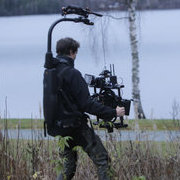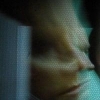-
Posts
96 -
Joined
-
Last visited
About John-Erling Holmenes Fredriksen
- Birthday 04/09/1985
Profile Information
-
Occupation
Cinematographer
-
Location
Oslo, Norway
Contact Methods
-
Website URL
http://johnerling.no
Recent Profile Visitors
3,638 profile views
-
Mostly Vision 3 500T (also for daylight), but the double exposures were expired Fuji Eterna 250D
-
Thanks! As a starting point I underexposed a stop, setting the ISO to half the amount. But I of course made some individual judgement for each frame, depending on what I wanted to see. For example the shadow side of their faces I wanted to be see through, to fill them with the next exposure, so I made sure they were well under, exposing for the details outside the window instead.
-
Thanks, that’s a good idea! For anyone interested, this is the final video with the effect: https://vimeo.com/364123783
-
Just to follow up. We did this effect using the 416. But discovered that we could not simply shoot out the roll and reload it, because it would then be upside down with the sprockets on the wrong side. So we had to shoot out the roll and then manually roll it back into the feed compartment inside a loading tent. It was time consuming ? We could not access another camera that could actually rewind, but I would recommend that to do this efficiently.
-
I’m intending to do some double exposures on 16mm film with an Arri 416 camera. The most rudimentary method I could think of is just expose the entire roll (one stop underexposed, or however I feel is appropriate for the subject), make notes of the contents, and then reload the same film to shoot the second layer. But sometimes it would be really convenient to be able to just «rewind» the film right away to do the second layer. As far as I can see from the manual, there is no such function in the camera. I guess you could open the mag and do it manually, but it sounds cumbersome. Anyone done this and know a good method that I haven’t though of?
-
John-Erling Holmenes Fredriksen changed their profile photo
-
I just graduated from The Norwegian Film School, with this video as one of my graduation projects. Any comments are much appreciated. I could say a lot about the project and the circumstances, but it's always more fun to just let people experience it, and then hear what they're left with. http://vimeo.com/elling/66725 Enjoy. --- John-Erling Holmenes Fredriksen Cinematographer Oslo, Norway http://johnerling.no
-
I know it's not, but writing the actual dimensions takes longer, and it's close enough to be a valid concern. It's smaller than m4/3 and a bit larger than s16. It is pretty far away from 35. I don't mind the sensor size, I shot a lot with the SI-2k and loved it, and I love shooting 16, I just think they've made a serious mistake with mount options. They should at least supply a m4/3 mount, as those lenses would give a better range of focal lengths, even though I'd hate to use them for filming. Whether 16mm lenses would cover it, I don't know, but I've tested quite a few 16mm lenses on a m4/3 sensor, which is larger, and found that you can get pretty wide before you get vignetting. Either way, having a sensor that is marginally larger than 16, with mount options for 35mm lenses, is just not a good idea. No matter how cool the camera is otherwise.
-
Yeah, because why oh why is there no PL mount so we can use 16mm-lenses on it? 35mm EF-mount is completely bullocks on an as-good-as 16mm sensor... I mean, how often can you go out on a job and make do with only normal and long focal lengths? "Director: Hmm, can we go a bit wider on this one? DoP: Eeeh, the thing is..." I'm not saying the camera won't have it's uses, and at that price it looks like an incredible piece of image capturing goodness, but geez, such a simple thing that would open up even more gates...
-
Having gone through this exact process with an experienced post house in Norway for a short aiming at international festivals, my understanding is that 24 is highly recommended. I assume you will create a DCP, as a lot of international festival are using local movie theaters, and international movie theaters are slowly but surely going digital. In Norway every cinema is digital, but we're a bit ahead of the bunch on this one. When making a DCP you have to take into consideration that the DCI specification still does not support 25 fps. So even if you can create a DCP that is 25 fps, which will play on a lot of digital cinemas, there is also a lot of equipment deployed in worldwide cinemas that only support the DCI standard 24 fps (and 48). So you'd have to make a 24 fps DCP for those theaters. This means you're 25 fps film will play (marginally) slower in those cinemas, and your sound quality will be (marginally) worse because you'd have to stretch the waveform to get from 25 to 24. If you shoot 24, you will also have to make 25 fps versions for broadcast and DVD, but theatrical projection would always be my first priority, and the people in the know says going from 24 to 25 is preferable to the other way around because your movie will play a bit faster (better too fast than too boring) and your sound waveform will be compressed instead of stretched (better quality sound). Anyway, that was the recommendation from my post house and their reasoning. We decided to shoot 24, and have had no issues so far.






